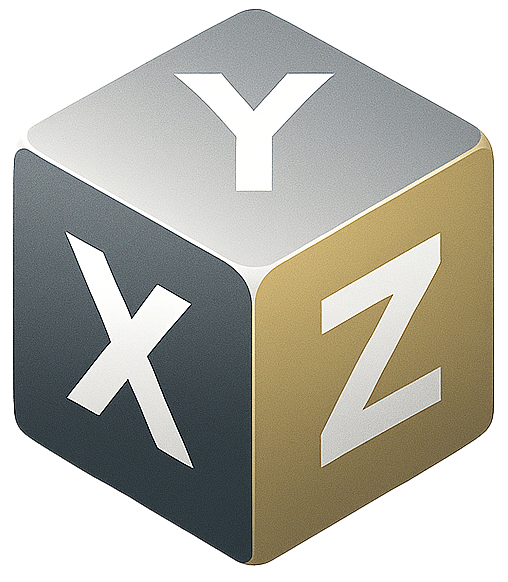
Electronic DOS Files
This page provides access to electronic density of states (DOS) files from the DXMag HeuslerDB. These files contain detailed electronic DOS data for Heusler compounds in JSON format.
Available DOS Files
| File Name | Structure Type | Description | File Size | Download |
|---|---|---|---|---|
| PDOS_json_full_cubic_241229 | Full Heusler - Cubic | Electronic DOS for full Heusler compounds in cubic structure | 588 MB | Download |
| PDOS_json_full_tetra_241229 | Full Heusler - Tetragonal | Electronic DOS for full Heusler compounds in tetragonal structure | 574 MB | Download |
| PDOS_json_inverse_cubic_241229 | Inverse Heusler - Cubic | Electronic DOS for inverse Heusler compounds in cubic structure | 672 GB | Download |
| PDOS_json_inverse_tetra_241229 | Inverse Heusler - Tetragonal | Electronic DOS for inverse Tetragonal compounds in tetragonal structure | 720 MB | Download |
| PDOS_json_half_cubic_241229 | Half Heusler - Cubic | Electronic DOS for half Heusler compounds in cubic structure | 553 MB | Download |
| PDOS_json_half_tetra_241229 | Half Heusler - Tetragonal | Electronic DOS for half Heusler compounds in tetragonal structure | 467 MB | Download |
File Format
Each archive contains electronic density of states data in JSON format:
- Each compound's DOS data is stored in individual JSON files
- The data includes energy (eV) vs density of states (states/eV) arrays
- For spin-polarized calculations, both spin-up and spin-down DOS are provided
- Total DOS and partial DOS (per atom/orbital) may be included depending on the dataset
Archive Decompression
After downloading the tar.xz archive, you can decompress it using the following command in a Unix-like terminal:
tar -xvJf PDOS_json_full_cubic_241229.tar.xz
Data Structure and Loading
The JSON files are created using pymatgen CompleteDos objects and serialized with monty.serialization. Each file is named as X2YZ_UUID.json where X2YZ represents the compound formula and UUID is a unique identifier.
Loading DOS Data
To load and analyze the DOS data, you can use the following Python code:
import monty.serialization as ms
from pymatgen.electronic_structure.core import Spin, OrbitalType
# Load the DOS data (returns a pymatgen CompleteDos object)
dos = ms.loadfn('X2YZ_UUID.json')
# Get total DOS
total_dos = dos.get_densities() # total DOS
# For spin-polarized systems:
# total_dos = (dos.get_densities(Spin.up), dos.get_densities(Spin.down))
# Get energy grid relative to the Fermi level
energies = dos.energies - dos.efermi
# Get spd-decomposed DOS
spd_dos = dos.get_spd_dos()
dos_s = spd_dos[OrbitalType.s]
projected_dos_s = dos_s.get_densities()
# Similarly for p and d orbitals:
dos_p = spd_dos[OrbitalType.p]
dos_d = spd_dos[OrbitalType.d]
projected_dos_p = dos_p.get_densities()
projected_dos_d = dos_d.get_densities()Required Dependencies
To work with these files, you need to install the following Python packages:
pip install pymatgen montyData Organization
The CompleteDos object contains:
- Total DOS: Overall density of states for the compound
- Projected DOS: DOS projected onto atomic orbitals (s, p, d, f)
- Site-specific DOS: DOS for individual atomic sites
- Energy grid: Energy values (typically referenced to the Fermi level)
- Fermi energy: The Fermi level of the system
Example Analysis
Here's a complete example to plot the total DOS:
import matplotlib.pyplot as plt
import monty.serialization as ms
# Load DOS data
dos = ms.loadfn('X2YZ_UUID.json')
# Get energies relative to Fermi level
energies = dos.energies - dos.efermi
# Get total DOS
total_dos = dos.get_densities()
# Plot
plt.figure(figsize=(8, 6))
plt.plot(energies, total_dos)
plt.xlabel('Energy (eV)')
plt.ylabel('DOS (states/eV)')
plt.title('Total Density of States')
plt.axvline(x=0, color='r', linestyle='--', label='Fermi Level')
plt.legend()
plt.grid(True, alpha=0.3)
plt.show()Usage and Citation
When using these datasets for research or other purposes, please cite the appropriate publications listed in the References section of the main database page. All data is published under the CC BY 4.0 license.